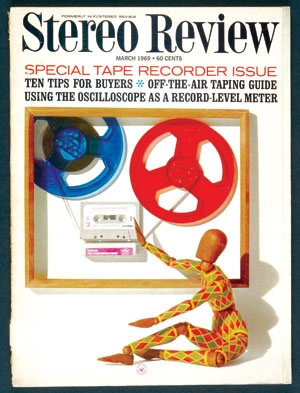50 Greatest A/V Innovations Page 2
| Click here to see a gallery of innovative products. |
4. DVD Officially, the name has no other meaning, though the provenance clearly is "digital videodisc." (Forget anything you ever read about "digital versatile disc"; it's true, but the letters never really stood for that.) Beginning in 1996, DVD extended the digital revolution wrought by CD to video, with similar benefits. Now we have high-definition digital videodiscs, HD DVD and Blu-ray Disc, that take it all to the next level.
5. Walkman Sony co-founder Akio Morita's signature creation (circa 1979) was at once modest and profound. Putting a cassette transport into something resembling a pocket transistor-radio chassis that played through a lightweight stereo headset gave the world a new way to listen to music, which it rapidly embraced. And the Walkman's influence was at least as important as its immediate popularity, inspiring a string of successors, from the portable CD player to the first MP3 players to the iPod.
6. VCR Although slow to take off (the first Betamax machine went on sale in late 1975), the videocassette recorder eventually revolutionized TV watching and, to pretty much everyone's surprise, movies. The introduction of Hi-Fi VCRs, with high-quality stereo sound, primed another revolution: home theater. Because Dolby Surround was matrix-encoded into 2-channel stereo soundtracks, it was carried over onto Beta and VHS Hi-Fi movie releases, just waiting to be unlocked.
7. Cable TV Cable TV actually originated in the late 1940s as Community Antenna Television, or CATV. The idea was to capture broadcast signals with well-located antennas and distribute them to homes where good off-air reception wasn't possible. But the key innovation came in the early 1970s with the advent of nonbroadcast cable channels, such as HBO, that subscribers paid to watch. The success of "pay TV" led to the proliferation of channels and the incredible programming diversity that we take for granted today.
8. Surround Sound Surround sound as we know it began with Dolby Stereo - a.k.a. Dolby Surround - in 1976. Combining Dolby noise reduction with phase/amplitude matrix encoding that folded 4 channels into 2 for retrieval on playback, it enabled a conventional optical film soundtrack to play in mono, stereo, or surround, depending on a theater's capabilities. The encoding and decoding systems were based on techniques pioneered several years earlier in the ill-fated matrix quadraphonic schemes (SQ, QS, EV-4), but with a different speaker layout. In 1992, surround entered the digital era with Dolby Digital, which enabled fully discrete 5.1-channel soundtracks.
9. Plasma Displays Although the underlying technology for plasma TVs was developed in the mid-1960s, it didn't come together in a commercially viable form until about 30 years later. Then it took the world by storm. A flat-panel, high-resolution color TV that could hang on a wall was science fiction become fact. As their performance improved and their prices dropped, plasma displays helped drive the expansion of HDTV and spawned a raft of complementary products, such as shallow, stylish speakers designed to look and sound good next to them.
10. HDTV After the relatively quick incorporation of color into broadcast TV standards in 1954, the next 30 years brought only minor refinements, such as stereo audio and closed-captioning. Although discussion of and work on ways to transmit widescreen video with much higher resolution began in the 1970s, nothing ever seemed to find its way out of the lab. (The joke was that no matter when you asked, high-definition TV was always 10 years off.) But this perennial dithering proved a blessing in disguise, since it allowed time for digital video technology to mature. Finally, in late 1998, a very sophisticated digital TV system that supported widescreen HDTV and 5.1-channel surround sound made its U.S. debut. Scarce initially, HD programming is now widespread, and when analog broadcasting goes dark early next year, the revolution will be complete.
11. The Internet Once audio and video are digital, they can be shipped around over digital networks, like oil through a pipeline. And what's the biggest, baddest digital network around? The Internet, of course. Its roots, amazingly, are in an early academic computer-networking system called ARPANET, created under the auspices of the Defense Advanced Research Projects Agency (DARPA). Turned on in 1969, it was slow and primitive, but it fueled the development of the standards and technologies that by the early 1990s constituted the public Internet. Goodbye, Pentagon; hello Napster and YouTube.
- Log in or register to post comments




































































